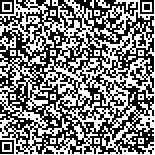下载中心
优秀审稿专家
优秀论文
相关链接
摘要

使用高空间分辨率卫星WorldView-2的多光谱遥感影像,构建植被指数和纹理因子等遥感因子与森林地上生物量的关系方程,并计算模型估测精度和均方根误差,探索高分辨率数据的光谱与纹理信息在温带森林地上生物量估测应用中的潜力。以黑龙江省凉水自然保护区温带天然林及天然次生林为研究对象,通过灰度共生矩阵(GLCM)、灰度差分向量(GLDV)及和差直方图(SADH)对高分辨率遥感影像进行纹理信息提取,并利用外业调查的74个样地地上生物量与遥感因子建立参数估计模型。提取的遥感因子包括6种植被指数(比值植被指数RVI、差值植被指数DVI、规一化植被指数NDVI、增强植被指数EVI、土壤调节植被指数SAVI和修正的土壤调节植被指数MSAVI)以及3类纹理因子(GLCM、GLDV和SADH)。为避免特征变量个数较多对估测模型造成过拟合,利用随机森林算法对提取的遥感因子进行特征选择,将最优的特征变量输入模型参与建模估测。采用支持向量回归(SVR)进行生物量建模及验证,结果显示选入模型的和差直方图均值(sadh_mean)、灰度共生矩阵方差(glcm_var)和差值植被指数(DVI)等遥感因子对森林地上生物量有较好的解释效果;植被指数+纹理因子组合的模型获得较精确的AGB估算结果(R2=0.85,RMSE=42.30 t/ha),单独使用植被指数的模型精度则较低(R2=0.69,RMSE=61.13 t/ha)。
The effect of forest biomass on carbon cycles has long been recognized.Therefore, an accurate assessment of forest biomassis required to understand ecosystem changes. This research uses vegetation indices and textural indices based on high spatial resolution Worldview-2 multispectral imagery to establish their relationship with forest AGB (Above Ground Biomass) and assess the accuracy of the estimation model. This research also explores the capability of spectral and textural information for AGB assessment at the Liang Shui National Nature Reserve, Northeast China. Remote sensing vegetation and texture indices were derived from high spatial resolution Worldview-2 multispectral data. We applied three different algorithms to extract the texture indices from the Worldview-2 data, including Gray Level Co-occurrence Matrix, Gray Level Difference Vector, and Sum and Difference Histograms. Six vegetation indices, namely, RVI, DVI, NDVI, EVI, SAVI, and MSAVI, were computed. The relationship among the above mentioned indices and 74 field measurements was established.However, the over fitting problems for the training regression model could occur due to the many input independent variables (i.e., vegetation indices and texture indices), which could decrease the robustness of the regression model. The random forest algorithm could avoid overfitting through the training process, so it was utilized to perform feature selection. Several optimal variables were selected to conduct the regression analysis.The support vector regression method was implemented to train and validate the AGB models. Results show that variables selection could better interpret forest AGB and obtain accurate predicted results. Comparisons between the two estimation models were made. The first model only applied vegetation indices, whereas the other model integrated vegetation and texture indices. The results also show that the accuracy of the vegetation indices model was lower than the vegetation+textural indices model (integrated vegetation indices with texture indices) at R2=0.69, RMSE=61.13 t/ha and R2=0.85, RMSE=42.30 t/ha, respectively. This research confirms that textural information could improve the accuracy of forest AGB estimation to a certain extent.

